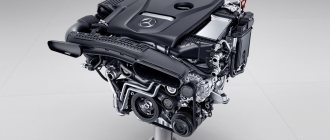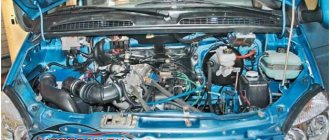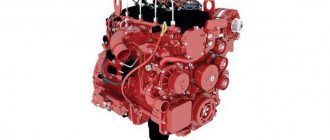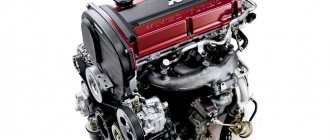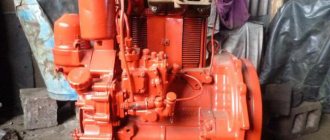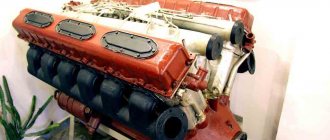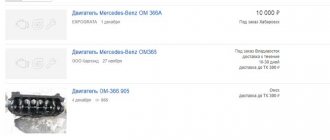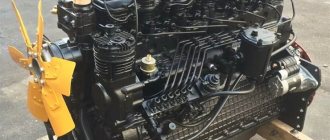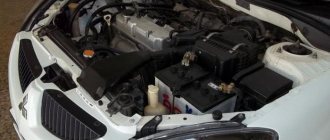When it comes to powertrains designed and manufactured in Japan, the first thing people associate with the products is reliability and build quality. Perhaps no Japanese manufacturer is more popular and recognizable than the Toyota Corporation. The units earned fame and authority due to their survivability and service life, which for most devices exceeds 300,000 km.
In 1986, the production of an engine began, which glorified the company and secured its status as a developer of serial units with a sporty character. This is the first generation motor, the “jz” series. The product turned out to be so successful that in 1991 a sequel was released, the 2jz engine, and the second generation power plants became the most powerful engines in the series. Three decades have passed since the release of the unit, however, the mechanism is still in demand and is considered a model that combines simplicity, reliability, and safety margin.
1986 Toyota Supra:
Description
The appearance of the power unit is due to the Toyota Supra car; sales started in 1986 of the last century. Initially, the vehicle was equipped with a power unit labeled 1jz. Later, in 1991, the Toyota Aristo vehicle was released, which was equipped with a 2jz gte engine. The popularity of the unit was achieved thanks to the built-in resource; the product can easily be modified and improved. This is a rare case when the engine power doubles.
The 2jz ge engine is an in-line, six-cylinder unit with a volume of three liters. The cylinder block material is cast iron with an installed aluminum head. The designers borrowed the idea of the platform from Nissan units, the RB series. The in-line design balances the motor, so you can spin the product without fear of consequences.
Due to the ratio of the dimensions of the piston stroke to the cross-section of the cylindrical chamber, the power plant turns out to be “square”. The gas distribution mechanism is equipped with two camshafts and four valves per chamber. In addition, 2JZ series motors released after 1997 have a phase shift device (vvt-i) invented by the company. Thanks to the principle, it was possible to optimize the operation of the unit, improve operating conditions, add power, and reduce fuel consumption.
The motor can easily withstand overloads, this is achieved by increasing the rigidity of the block. The crankshaft is made using the forging method, the part is fixed by seven bearings, which eliminates the influence of runout when the speed increases. The unit is not prone to overheating, since the piston bottoms are cooled by installed sprinklers. These design techniques led to the fact that cars with a 2jz engine installed on them, with proper care, covered 500,000 km.
Toyota Aristo 1991 release:
Important! When ordering a part or mechanism for a unit, you need the installation number. Factory markings are applied to the engine frame; the information is located between the hydraulic power steering and the engine mount.
Technical characteristics of the 2JZ engine
The design features of the base 2jz ge unit are inherent to other modifications; engine characteristics change due to changes in order to increase power, torque or fuel efficiency of the engine.
2jz engine characteristics:
| Explanation | Index |
| Manufacturer | Toyota Tahara Plant |
| Release period | 1991-2007 |
| Fuel | Gasoline AI 95 |
| Unit power supply | injector |
| How many bars | 4 |
| Assembly block alloy | cast iron |
| Positive displacement chamber (pcs.) | 6 |
| Placement of unit chambers | row |
| Valve, total (pieces) | 24 |
| Unit volume (cm3) | 2997 |
| Operating procedure of the unit | 1,5,3,6,2,4 |
| Volumetric displacement chamber, diameter, millimeters | 86 |
| Distance between the extreme positions of the piston, millimeters | 86 |
| Ratio of space above the piston: top/bottom | 8,5/10,5/11,3 |
| Unit power, horsepower | 220-325 |
| Torque (Nm) | 294-440 |
| Environmental Compliance | 2-3 Euro |
| Engine weight 2jz gte /ge/fse(kg.) | 270/230/220 |
| Fuel consumption city/highway/mixed (liters per hundred) | 18/10/12,5 |
| Unit service life (km.) | 400000 |
| Lubricating fluid | 0W-30, 5W-20, 10W-30 |
| Lubricant volume, liters | 3.9 – 5.4 |
| Lubricant change period required/desirable, kilometers | 10000/5000 |
Modifications and technical characteristics of the 2JZ engine
Let's take a look at the technical specifications of the 2JZ GE series engine:
| Parameter | Meaning |
| Engine cylinder | 6 |
| Motor type | Row |
| Nutrition | Injection |
| The material from which the cylinder block was made | Cast iron |
| Valves in the cylinder | 4 |
| Piston stroke and cylinder diameter | 86 mm each |
| Compression | 10,5 |
| Torque | 294 – 440 Nm |
| Ecoclass | Euro 2 or 3 |
| Manufacturer | Tahara Plant |
| Volume | 3 liters |
| Power | 320 horsepower, 220 horsepower |
| Fuel consumption in the city | 18 liters per 100 km |
| Life resource | 400 thousand kilometers |
Attention! The 2 JZ series motor has several models GE, FSE, GTE. They may differ from the characteristics presented in the table.
There are naturally aspirated and turbocharged versions. Accordingly, their power and torque will also be different. However, the volume of this series is the same for all modifications.
Engine 2JZ GE
The 2 JZ GE engine series are equipped with sequential fuel injection. These are naturally aspirated engines with a cylinder block made of cast iron and a cylinder head made of aluminum alloy.
Similar article Toyota Corolla engine characteristics
Since 1997 they have been equipped with the VVTi system. The power of the power units is small - 220 horses at six thousand rpm. Motor weight 230 kilograms. Apparently it doesn't weigh that much.
Timing – DOHC with four valves per cylinder. After restyling the engine, the manufacturer installs a DIS ignition system with one coil for two cylinders. At the same time, the manufacturer switches to installing VVTi.
Oil consumption depends on the year of manufacture of the engine. First-generation engines consume more lubricant than second-generation engines.
The engine life exceeds half a million with proper care. With regular technical inspections and replacement of consumables, it will last a long time.
Engine 2JZ FSE
The technical characteristics of the engine of the 2JZ FSE model have been improved by the manufacturer. Now the engine has direct injection, the compression ratio has increased to 11.3. Due to the fact that it appeared in 2000, the engine acquired similar technical characteristics.
The fuel consumption of this engine was reduced by twenty percent. However, such a decrease did not affect its capacity. It became no worse than the atmospheric engine described above. In addition, the 2JZ FSE engine has high environmental standards, so you can travel abroad and travel around Europe even if the engine is already 20 years old.
Installed on the following machines:
- Toyota Mark 2;
- Toyota Brevis;
- Toyota Progress.
Engine capacity was slightly reduced to 2.5 liters. And the cylinder block and cylinder head are made of the same materials as the naturally aspirated engine above. The toggle ignition system of these engines has the abbreviation DIS3.
Engine 2JZ GTE
The 2JZ GTE series engines are considered the most complete. Unlike the naturally aspirated engine, this engine is its turbo version. The cylinder head was developed by Yamaha. For the first time this engine was installed on Toyota Soarer cars.
Similar article Technical characteristics of the 2TR FE engine
If the first generations of these engines had problems with turbine disks, which could delaminate when reaching high speeds. Then the release of the third generation of 2JZ GTE engines in 1996 leads to improved dynamic performance and power. The power unit was equipped with a turbocharger with proprietary Beams architecture and two turbines.
The engine weight has not increased much. A VVTi gas distribution system was installed. This is a stepless phase changing system. The cooling systems have been improved and the friction of the camshaft cams has been reduced. Now these parts, even on a turbocharged engine, did not wear out as quickly as before.
Let's take a closer look at the design of 2JZ engines.
Positive and negative sides
Internal combustion units have advantages and disadvantages, and the 2jz is no exception.
The advantages include:
- The safety margin characteristics of the unit can withstand up to two thousand horsepower;
- Rigid design of the unit block due to the use of an in-line 6-cylinder layout;
Power unit 2JZ, 6 cylinders, in-line layout:
- An emergency belt break does not disable the gas distribution mechanism of the unit;
- The material of the housing removes heat and makes the structure of the unit durable;
- The forged crankshaft of the unit can withstand operating loads;
- The supports securely fix the crankshaft of the unit, the engine is not afraid of increased speeds;
Power unit 2JZ, crankshaft bearings:
- The “square” geometry balances the unit;
- Oil sprayers remove excess heat from the bottom of the unit piston;
- The units and mechanisms of the unit can withstand a twofold increase in power;
- The installation size of some attachments allows for the interchangeability of unit parts on modifications.
Disadvantages include:
- The device that tensions the gas distribution mechanism belt often fails;
- Unreliable fixation of the unit’s oil pump seal, lubricant leaks are possible;
- Weak crankshaft pulley of the unit, risk of breakdown;
- The turbine of the unit is not reliable, there is a risk of breakdown;
- The design of the unit head does not allow access to air in the required proportion.
2jz engine malfunctions
Due to the fact that the power plant has been in operation for a long time, users and mechanics have studied the unit and know its weak points. Among the problems:
The unit does not start
The reason is that the spark plugs are flooded: the parts are unscrewed, dried, put back in place, if necessary, replaced. In addition, the unit does not tolerate frost and moisture.
The unit malfunctions, “troits”
Reason: spark plugs, ignition coil, or phase shift valve.
The operation of the unit is accompanied by unstable speed
As a rule, the reason lies in the vvt-i valve, the part is changed. The idle speed sensor of the unit or the throttle valve is faulty. To eliminate the malfunction, the parts are cleaned.
Increased fuel consumption of the unit
They check and change the filter elements, and also diagnose the oxygen sensor in the probe.
The unit is knocking
The reason lies in the phase shift clutch, the service life of the part is 80,000 kilometers. The valves knock, the parts are adjusted to eliminate the sound. In addition, the bearing that tensions the attachment belt may fail; the part must be replaced.
Reviews from car owners with 2JZ-GTE engines
It is also worth noting that, judging by the reviews, no obvious shortcomings were identified in the engine of this modification. With regular and competent maintenance, it proved to be a very reliable engine, which for its parameters has fairly low fuel consumption. The cylinders are forced to use platinum spark plugs, since the spark plugs are quite difficult to access. A small minus in American mounted units with hydraulic tensioner.
However, by and large, this particular model of the power unit has remained a leader in quality and level of performance for a long time.
Source
Tuning the 2JZ engine
The features of the engine are such that the unit is suitable for modification and this is known. The power plant is so popular in terms of conversion that it is used for installation on imported equipment and vehicles developed by our designers.
From a rational point of view, it is not advisable to modify the basic modification of the 2JZ GE. In terms of the ratio of invested funds and obtained characteristics, it is economically profitable to modify the 2jz gte modification. In a unit with a safety margin, there is potential for improvement. Technical indicators increase by one and a half times without serious intervention in the design.
- A simple way is to increase the charge air pressure. For these purposes, an improved model of the air intercooler is used, the cooler is enlarged, and oil cooling is used. They also install a higher-capacity fuel pump, a three-inch improved intake mechanism, 550 cc nozzles, a boost control device, and change the program. These manipulations increase the pressure to 1.3 bar. Since the power unit is popular for such applications and has been studied to the smallest detail, it is not difficult to find common operating patterns and programs. Thus, a ready-made circuit and firmware is simply purchased and installed. Such changes will make it possible to increase the parameters of the unit by one and a half times and achieve a power of 450 horsepower.
AEM Infinity Configurable Unit Control:
- Option to replace the turbine. These steps involve purchasing and installing a larger turbine compressor. In this case, there is no interference with the cylinder head, and the power indicator will be at the level of 750 horsepower. Such an improvement will require the installation of a high-performance fuel pump capable of delivering 400 liters per hour. They use improved 1000cc nozzles, new camshafts to achieve a phase indicator of 264, install reinforced springs on the valves and a new program.
Brian Crower Camshafts:
- Major design changes will be required to achieve the next level of power rating. Replace the piston group with forged parts. The cylinder head is being modified. Camshafts with changed phases 280 are purchased. A turbine and fuel mechanism components are selected. Actions are capable of achieving power of 1500 and even 2000 horsepower.
Greddy Turbo kit for modifying the unit:
Design of 2JZ engines
These engines were complex in design. What distinguished them from other engines of that time was the new gas distribution system installed for the first time. The metal that was used to make cams and crankshafts with camshafts had stable properties with minimal friction.
Crankshaft and piston group
The crankshaft of all engines in this series was the same in structure. However, the piston group was very different. For example, the 2JZ GE turbocharged engine had small recessed pistons. They are made to reduce the compression ratio. Small grooves were also drilled to allow oil cooling to circulate better through the pistons.
This design prevented parts from wearing out quickly. As a result, the motor could operate for a long time in difficult operating conditions without harming itself.
Gas distribution mechanism
As I said earlier, the first developed VVTi system was used for gas distribution. The actuator of which was installed in the camshaft pulley.
Attention! The camshaft is made by Brian Crower.
The drive housing is connected to a toothed pulley, and the rotor is connected to the camshaft. The lubricating fluid is directed towards the rotor petal, at the same time a drainage cavity opens on the other side of the petal. This turns the camshaft.
The system is controlled using a valve. When a signal is required, an electromagnet moves the spool through the plunger, directing the oil.
Similar article Technical characteristics and purchase of an engine for Toyota Ipsum
Powertrain lubrication
Experienced mechanics recommend pouring only original oil into these units. Select according to the parameters of the motor lubricant. The following types are suitable:
- 0W30;
- 5W20;
- 5W30;
- 10W30.
It is recommended to buy only at official car markets. Check the lubricant for compliance with the types described above. The total amount of oil in the 2JZ GE engine ranges from 3.9 liters to 5.3 liters. It all depends on the modification of the power unit.
Power plant cooling
To cool the engine, the developers came up with a special jacket. It runs throughout the entire engine body. Oil sprayers are installed inside the engine under the pistons, which cool the heating and rubbing parts.
